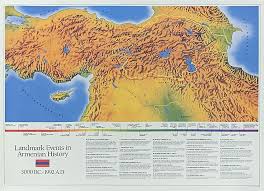The Enduring Spirit of Armenians: A Legacy of Resilience and Rich Heritage

The Rich Heritage and Resilience of Armenians
Armenians, with their vibrant culture and storied history, have left an indelible mark on the world. Nestled in the Caucasus region between Europe and Asia, Armenia is a land of breathtaking landscapes and ancient traditions.
One of the most notable aspects of Armenian culture is its deep-rooted connection to Christianity. As the first country to adopt Christianity as its state religion in 301 AD, Armenians have upheld their faith through centuries of adversity and triumph.
Armenians are renowned for their creativity and artistic talent. From intricate khachkars (cross-stones) to mesmerising traditional music, Armenian artistry reflects a rich tapestry of influences from both East and West.
The Armenian Genocide of 1915, in which an estimated 1.5 million Armenians perished at the hands of the Ottoman Empire, stands as a tragic chapter in Armenian history. Despite this immense tragedy, Armenians have shown remarkable resilience and strength in preserving their identity and heritage.
Armenian cuisine is a delightful fusion of flavours and textures, with dishes like dolma, lavash bread, and baklava enticing taste buds around the globe. Food plays a central role in Armenian culture, bringing families and communities together in celebration.
Today, Armenians continue to make significant contributions to various fields, from science and technology to arts and literature. The global Armenian diaspora serves as a testament to the enduring spirit of a people who have overcome adversity with grace and determination.
In conclusion, Armenians embody a rich tapestry of history, culture, and resilience that has shaped their identity over millennia. Their legacy serves as a reminder of the enduring power of human spirit in the face of challenges.
Understanding Armenian Identity: Ethnicity, Religion, and Nationality FAQs
- Are Armenians Middle Eastern or Arab?
- What ethnic group are Armenians closest to?
- What religion are the Armenians?
- What nationality is Armenian?
Are Armenians Middle Eastern or Arab?
The question of whether Armenians are Middle Eastern or Arab is a common query that arises due to the geographical location of Armenia in the Caucasus region, which lies at the crossroads of Europe and Asia. Armenians are considered to be ethnically distinct from Arabs, with their own unique language, culture, and history. While Armenia has historical ties to the Middle East through trade and cultural exchanges, Armenians are generally classified as part of the Caucasian ethnic group rather than Middle Eastern or Arab. This distinction highlights the diversity and complexity of identities within the region and underscores the rich heritage of the Armenian people.
What ethnic group are Armenians closest to?
Armenians, as an ethnic group, are often regarded as being closest in genetic and cultural affinity to the people of the Caucasus region, particularly to Georgians and other indigenous groups in the South Caucasus. This proximity is rooted in shared historical ties, linguistic connections, and common ancestral origins that have shaped the cultural landscape of the region for centuries. Despite these similarities, Armenians maintain a distinct identity marked by their unique language, traditions, and historical experiences that set them apart within the diverse tapestry of ethnic groups in the Caucasus.
What religion are the Armenians?
Armenians predominantly adhere to the Armenian Apostolic Church, an ancient Christian denomination that has been a cornerstone of Armenian identity for centuries. As the first nation to adopt Christianity as its state religion in 301 AD, Armenians have maintained a strong religious heritage that continues to play a significant role in their cultural and social fabric. The Armenian Apostolic Church, with its rich traditions and rituals, serves as a unifying force among Armenians worldwide, reflecting their deep-rooted faith and spiritual connection.
What nationality is Armenian?
Armenian nationality refers to individuals who are citizens or residents of Armenia, a country located in the South Caucasus region. Armenians are known for their distinct cultural heritage, language, and traditions that have been preserved over centuries. Being Armenian is not just about citizenship but also encompasses a sense of belonging to a rich historical and cultural lineage that has shaped the identity of its people.

